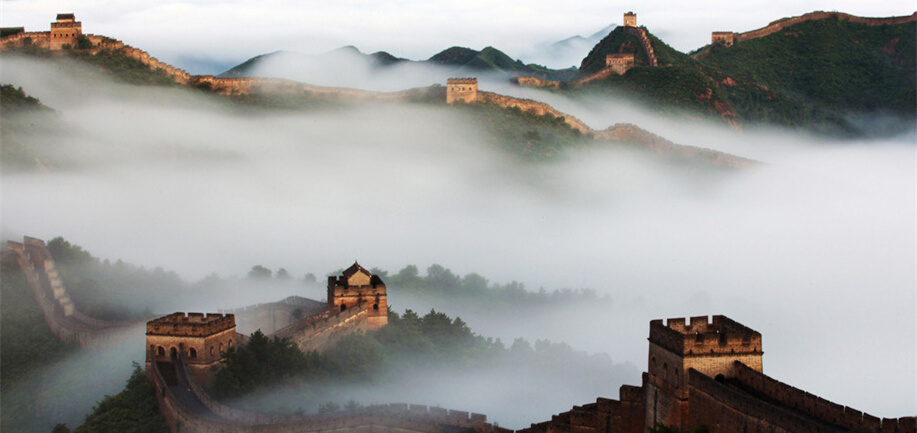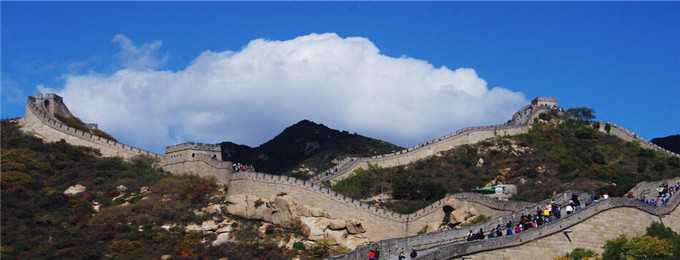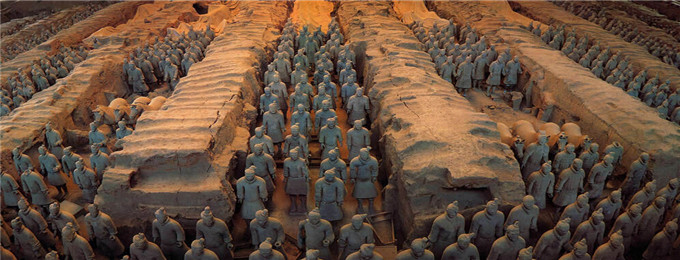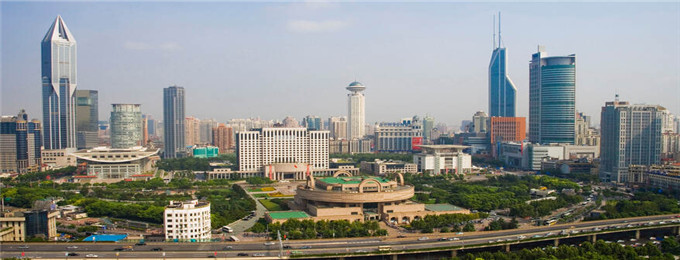
10-day LGBT China Golden Triangle Tour
Known as golden triangle cities tour traditionally, Beijing, Xian and Shanghai are always the primary choices for first-time visitor to China. No matter what you are looking for, these three cities do have some for you.
Our local professional guide and experienced driver will expect you at the airport after your baggage reclaim and customs clearance, and then escort you to check in the hotel in downtown area. Relax during the rest time of the day to recover from the jet leg. You will get some suggestions about how to spend the rest time of the day from our tour guide.
Destination (club)(optional activity)
Location: 7 Gongti Xi Lu,Chaoyang district
Tel: 86-10-6552 8180
website: www.bjdestination.com
Opening Hour: 8pm-3am Sun-Thu; 8pm-5am Fri-Sat. Free entry Wednesdays.
Brief Introduction: The original golden oldie. Despite being Beijing's longest-established LGBT venue (it was launched around 2004), Des, as it’s affectionately known to locals, has managed to remain top dog. The popular Friday and Saturday spectaculars are among the best-attended and most colourful in town, and the multi-level layout prevents most spaces other than the heaving dance floor from ever being intolerably overcrowded. International guest DJs and occasionally a sprinkling of go-go boys, drag queens or even the odd celebrity arrive on weekends to sweeten the pot. The confidential and free HIV testing clinic on the top floor, run by golden-hearted volunteers from LGBT NGO Danlan, is also a valuable addition. Drinks are buy-one-get-one-free before 10pm. Entry charges vary and usually include a free drink. Regulars can purchase membership cards (500RMB or 1,000RMB) for discounted entry and drinks deals.
Attention:
1. If you have no intention to Bar visiting, please tell your trip advisor who will omit that activity, requote the tour and give you the practical arrangements immediately.
2. Bars do have rest time and not available in whole 365 days, and we will recommend the equivalent ones to you based on your specific touring date if the bars closed. If you do have some in mind, please feel free to let me know.
3. Generally, the bar visiting activity is placed at the first night of a new destination for giving both you and your tour guide much more time to rest and prepare for the next days' activity. However, we would pull it out and arrange to 2nd or 3rd day if it has time conflict with your flight, or sightseeing.
1.Ming Tombs-Dingling Mausoleum
As the representative of the Ming Thirteen Mausoleum where buried 13 emperors and 23 empress of the Ming Dynasty (1368-1644), Ding Mausoleum is the tomb of the Emperor Zhu Yijun, the 13th emperor of Ming Dynasty, and it is also the only one whose underground palace was unearthed. Buildings on the ground consist of Treasure City, Grand Mansion, Ling'en Hall, two ground auxiliary halls, Ling'en Gate, Ling Gate, Shenbo Oven, Dinvine Wardrobe, Divine Stock, Slaughter Pavilion and Wailuo City, etc. The Grand Mansion is definitely the highlight of the Dingling. It is not only gallant and splendid, but also does not have a piece of wood and a nail. The rafters, brackets and inscribed board of the upper and lower caves are all inlaid with white stone sculptures and painted with colorful pictures which look like wood structure. The underground Palace consists of 5 underground halls buried Emperor Zhuyijun and two Queens, Xiaoduan and Xiaojing.
2.Badaling Great Wall
Located in Yanqing County Beijing, Badaling Section Great Wall is an important pass of the Ming Great Wall as a part of the great defensive project. Badaling is in the first place among the nine forts and a unique representation in the Ming Great Wall. Due to its high position with a steep terrain, it had become an important military pass in Ming dynasty and barrier against enemies in Beijing. It is the earliest opened spot of the Ming Great Wall to tourists. The Badaling scenic spot includes Badaling Great Wall as main part, Badaling Hotel, the Great Wall Museum of China whose name was dedicated by former President Jiang Zemin and other fully functional modern facilities for tourism service. The scenic area is well-know to the world by its grand landscape, perfect facilities and profound cultural historical connotation.
3.Beijing Roast Duck
Usually, climbing the Great Wall, enjoying Beijing Opera and savoring Beijing Duck are considered as three "musts" for those visiting Beijing for the first time. The traditional method of preparing Beijing Duck has a history of over 100 years with many legendary stories. Nowadays, Beijing has several restaurants offering decent Beijing Roast Duck with different flavors, such as Quanjude and Pianyifang.

1.Forbidden City
Located at the city center and called Gu Gong in Chinese, Beijing Forbidden City was the imperial palace for twenty-four emperors during the Ming(1368-1644) and Qing dynasties(1644-1911). Lying to the north of Tiananmen Square it is the world's largest palace complex and covers 74 hectares. Surrounded by a 52-meter-wide moat and a 10-meter-high wall are more than 8,700 rooms. Construction of the palace complex began in 1407, the 5th year of the Yongle reign of the third emperor (Emperor Chengzu, Zhu Di) of the Ming dynasty. It was completed fourteen years later in 1420, and then the capital city was moved from Nanjing to Beijing the next year. Here is the right place to know the China's glorious past and imperial culture.
2.Summer Palace
The original Summer Palace was built for celebrtaing the birthday of Emperor Qianlongs' in Qing Dynasty (1644-1911) but burnt down by Anglo-French allied forces in 1860. Rebuilt in 1888 by Empress Dowager Cixi but destroyed by the Eight Power Allied Forces in 1900. What you can see was rebuilt since 1903 though some architectures are destroyed forever. It is the largest preserved imperial garden and a former summer retreat for emperors. the 726.5 acres' area and three quarters water, Summer Palace is a perfect example of refined craftwork with finest materials, Longevity Hill, Kunming Lake etc with over 3,000 structures: pavilions, towers, bridges, corridors etc.
1.Temple of Heaven
Listed in the World Heritage List in 1998, Temple of Heaven was used to hold a memorial ceremony for the God in Winter Solstice Festival and to pray for harvest in the first month of the lunar year by the emperors in Ming and Qing dynasties. It is China's existing largest structure for sacrifice to heaven. Built in the first half of the AD 15th century, it is located in the royal gardens and surrounded by ancient pines. Here you can find the ancient China's philosophy on the relationship between the heaven and earth, which dominated the whole ancient China's history.
2.Yonghe Lama Temple
Built in 1694 during the Qing Dynasty (1644-1911) as the residence of the Emperor Yongzheng (the third emperor of the Qing Dynasty) before he ascended the throne, Yonghe Lama Temple is the largest and best-preserved lamasery in Beijing. in 1744, the residence was completely converted into a lamasery, so the features make it very different and unique from others, looks like a mini-palace with yellow glazed tiles on the roof and red walls circling the group of buildings.
3. Beijing Opera Performance
Beijing Opera represents the finest combination of literature, music, dance, martial arts, fine arts, acrobatics and many other arts available. Its way of performing is of as much a feature, differing from opera, pantomime and drama. The Peking Opera is a kind of art that pays equal attention to 'Chang (Singing)', 'Nian (Speaking)', 'Zuo (Acting)' and 'Da (Fighting)'. Singing in Beijing Opera has the certain tune that expresses the sentiment of the dramatic persona;Speaking in the play is the speech except singing; Acting is the performance of movement and expression; Fighting is the martial arts performed by dancing. It enables the audience to be inspired by the affection, not only from the language but also from the music, the physique and the fine arts. Simultaneously, Beijing Opera provides the opportunity to appreciate the pleasing stylistic and artistic harmony of the dance and music, the strength of the rhythm and designs even from only experiencing one act.
Hutong Rickshaw Tour
If you want to know Beijing culture and local history, Hutong should not be missed, and the best way to tour Hutong in limited time should be the rickshaw which saves time and energy and enlarges your tour range. The lanes have their own layout and structure, and when viewed from the air the combination of the lanes and courtyards resemble a chessboard with delicate gardens, fine rockeries and ancient ruins this makes them a wonder in the world. In the past, Beijing was composed of hundreds of courtyards around the Forbidden City, and these lanes stretched out in all four directions, connecting the different kinds of courtyards in the city. However, as the requirement for city construction, the number of them has fallen dramatically from 3250 to 1000.
Take Flight to Cian
Take flight to Xian. Your Xian tour guide will welcome you and escort you to your hotel. You can relax, or explore the city on your own. As the suggestions to tour city at night, you can consult our tour guide. You can relax, or explore the city on your own.
1+1 Club (mixed)(optional activity)
Location: Dong Da Jie (opposite the Royal Hotel).
Brief Introduction: The locals call it Yi Jia Yi. A two-floor club divided into three sections: a dance area always packed with young party people and DJ spinning hip hop/R&B/electronica beats; a lounge/chill section located at the back where people are better dressed and drink more expensive booze (dancing occurs here intermittently in the space between tables); and a pool area where guests sit in lounge chairs and tables to rest their feet or ears from the pulsating club (people here usually order coffee or tea). Navigating the club is tricky at first as there are several stairs and passageways leading to all three sections. There are a lot of attendants to help you find your way though. Crowded even on weekdays.
1.Terracotta Warriors and Horses Museum
It is a MUSTSEE tour spot in China. History shows that upon ascending the throne at the age of 13 (in 246 BC), Emperor Qin Shi Huang, the first Emperor of all China, who destroyed 6 states in China and unified whole China, had begun to work for his mausoleum. It took 11 years to finish. Over 7,000 pottery soldiers, horses, chariots, and even weapons have been unearthed from these pits. Most of them have been restored to their former grandeur. These life size terracotta figures of warriors and horses arranged in battle formations are the star features at the museum. They are replicas of what the imperial guard should look like in those days of pomp and vigor.
2.Muslim Quarter
Located to the north of the West Street in the city center, Xian Muslim Quarter is the hub of the Muslim community in Xian City. Here covers several blocks inhabitated over 20,000 Muslims. The world famous Great Mosque locates here. Walking along this twisted, narrow street, you will find numerous artwork stalls and the Muslim men with white hats sit inside it and talk leisurely with each other. Meanwhile, more and more tourists are coming here for the delicious snacks, such as preserved meat, casserole, various noodles, and so on. Besides, if you want to buy souvenirs, no place is better than here.
3.Square of Drum and Bell Towers
Square of Drum and Bell Towers is the city center of the ancient capital Xian (Chang'an), a bustling city center with cosmopolitan flair. Located in the center of Xi’an where the North Street (Bei Dajie), the South Street (Nan Dajie), the East Street (Dong Dajie) and the West Street (Xi Dajie) join, the Bell Tower is the largest and best preserved of all the bell towers in China, and it ranks first among similar architectures for its unique artistic, architectural and historic value. Both Drum and Bell Towers are called the "sister buildings " or "morning bell and dark drum".
4.Tang Dynasty Dance Show
As an art form, the show has its roots in folk fetes, praying for a good harvest or a better life, stories about Emperors. By combining poetry with the skilled playing of musical instruments, singing, dancing and also stunning costumes, the modern presentation is certain to give you an impressive view of ancient China including its splendid history, brilliant arts, distinct traditions and customs. Besides, Xian does have many places to enjoy the Tang Dynasty Music and Dance Show, such as Tang Dynasty Palace (Tang Yue Gong), Tang Paradise, Theater in Grand New World Hotel, Shaanxi Song & Dance Theater, Sunshine Lido grand theater and Live Singing and Dancing Show in Huaqing Hot Spring.

1.Ancient City Wall
Xian Ancient City Wall is 12 meters tall, 12-14 meters wide at the top, 15-18 meters thick at the bottom and covers 13.7 kilometers in length with a deep moat surrounding it. The 98 ramparts on the wall, which extend out from the main wall with every 120 meters distance, were built to defend against the enemy climbing up the wall. Each rampart has a sentry building, in which the soldiers could protect the entire wall without exposing themselves to the enemy. On the outer side of the city wall, there are 5948 crenellations (battlement), from which the soldiers can outlook and shoot at the enemy. On the inner side, parapets were built to protect the soldiers from falling off.
2.Big Wild Goose Pagoda
Located in the southern suburb of Xian City, about 4 kilometers (2.49 miles) from the downtown of the city, the Big Wild Goose Pagoda is a well-preserved ancient building and a holy place for Buddhists and the symbol of the old-line Xian. Originally built in 652 during the reign of Emperor Gaozong of the Tang Dynasty (618-907), it functioned to collect Buddhist materials that were taken from India by the hierarch Xuanzang. Have you heard or watched the movie<Journey to the West> or the handsome Monkey King? Do it, then you will find the meaning of the Big Wild Goose Pagoda.
Take flight to Shanghai . Your Shanghai tour guide will welcome you and escort you to your hotel. You can relax, or explore the city on your own. As the suggestions to tour city at night, you can consult our tour guide. You can relax, or explore the city on your own.
1.Nanjing Road
Nanjing Road, which is the main shopping street of Shanghai in China and one of the world's busiest shopping streets, contains two sections, Nanjing Road East and Nanjing Road West. It starts at the Bund in the east and ends in the west at the junction of Jing’an Temple and Yan’an West Street. Originally, Nanjing Road was the British Concession, then the International Settlement in which large quantitites of foreign goods imorted. And for shopping convenience, its eastern end has become an all-weather pedestrian arcade with traditional stores, modern shopping malls, specialty stores, theatres, and international hotels.
2.Bund
Centres on a section of Zhongshan Road (East-1 Zhongshan Rd.),the Bund is a mustsee in Shanghai for all reasons you have. There are 26 various buildings in different architectural styles, such as Gothic, Baroque, Romanesque, Classicism and the Renaissance etc. Besides, the 1,700-meters long flood-control wall, which is located on the side of Huangpu River from Huangpu Park to Xinkai River, is also known as the 'the lovers' wall' for the romantic hollowed-out railings and nice position to take the 'snap-shot' of the scenery of Pudong Area and Huangpu River. The Symphony of Lights, the night Huangpu river cruise, the cate along the bund, the shopping malls group, all of these give you reasons to go there.
3.Oriental Pearl TV Tower
Surrounded by the Yangpu Bridge in the northeast and the Nanpu Bridge in the southwest, The Oriental Pearl TV Tower is located in Pudong Park in Lujiazui, Shanghai. It is the world's third tallest TV (468 meters high) tower surpassed in height only by towers in Toronto, Canada and Moscow, Russia.There are three large spheres including the top sphere, known as the space module. Then there are five smaller spheres and three decorative spheres on the tower base. Its unique alluring architectural design makes it one of the world most attractive places.
Located in the Lujiazui Finance and Trade Zone in Pudong, Jinmao Tower is the second tallest building in China, third tallest in Asia and the fourth tallest in the world. Completed in 1999, the Jinmao Tower is 420.5 meters (almost 1380 feet) tall and covers an area of 2.3 hectares (5.68 acres). By perfectly combining the elements of traditional Chinese architecture with the gothic architectural style, the architects produced this amazingly modern building in accordance with the themes of the Chinese pagoda and the number eight. It is very interesting to note that that the lowest segment of the building is sixteen stories high and each succeeding segment is 1/8th smaller than its predecessor.
1.Jade Buddha Temple
Located in the western part of Shanghai, Jade Buddha Temple is a venerable and famous Buddhist temple in Shanghai. In 1882, Shanghai built an old temple to keep two jade Buddha statues which had been brought from Burma by a monk named Huigen. With the sparkling and crystal-clear white jade, these two Buddha statues are really beautiful and sanctity. The 190 centimeters high sitting Buddha is encrusted by the agate and the emerald, portraying the Buddha at the moment of his meditation and enlightenment. While the 96 centimeters long Recumbent Buddha is lying on the right side with the right hand supporting the head and the left hand placing on the left leg, and the sedate face shows the peaceful mood of Sakyamuni when he left this world.
2.People's Square
Situate in Huangpu District, the center of Shanghai, Shanghai People's Square is made up of the People's Park and an open square, some distinct architectures being themed by tourism, culture and business, and it is one of the most vital landmarks in Shanghai. Before 1949, the area of Shanghai People's Square and the People's Park was used as a noted horse racetrack structured in 1861, regarded as the "No.1 Racetrack in Far East". You still can find the relics of Shanghai People's Square main building located at the northeast part of the People's Square. Then, the People's Government structured the People's Park, the People's Avenue and the People's Square, and the bleachers and the main building of the horse racetrack were metastasized into a gymnasium and a library, made the former horse racetrack turn into a public place for recreation and culture of Shanghai people.
3.Shanghai Museum
Founded in 1952, the Shanghai Museum is a museum of ancient Chinese art situated on the People's Square in the Huangpu District of Shanghai. The exterior design of the round dome and the square base symbolizes the ancient idea of a round heaven and a square land, demonstrating the ancient wisdom and philosophy. The museum consists of 11 galleries and 3 exhibition halls, 11 galleries of which cover most of the major categories of Chinese art, such as: Ancient Bronze, Ancient Ceramics, Paintings, Calligraphy, Ancient Sculpture, Ancient Jade, Coins, Ming and Qing Furniture, Seals, and Minority Nationalities.
4.Yuyuan Garden
Located in the Anren Street of Shanghai, Yuyuan Garden was finished in 1577 by a government officer named Pan Yunduan of the Ming Dynasty for his parents as a place for them to enjoy a tranquil and happy time in their old age. With an area of 20,000 square meters, Yuyuan Garden has plenty of unique pavilions, halls, rockeries, ponds and cloisters in six main scenic areas, Sansui Hall, Wanhua Chamber, Dianchun Hall, Huijing Hall, Yuhua Hall and the Inner Garden.
The Bazaar is a crazy gift shop, host to a ton of random merchandise: clothing, jewelry, furniture, and plenty of reading material and music on the top floor, much of it in Chinese. Don't worry, if you can't read Chinese, there's some English selections too. No matter what you're (not) looking for, there's bound to be something here to get your shop on with. Prices are reasonable, for the most part. Helpful staff.

Your private car, driver and tour guide will be ready and waiting at your hotel lobby to get you to the airport on time. Sit back and relax as they help you check-in and escort you to the correct security gate.
| Nov.1 - Mar. 31 | Superior Class | Deluxe Class |
|---|---|---|
| 2-5 travelers | $1821  |
$2009  |
| 6-9 travelers | $1375  |
$1558  |
| 10 travelers & above | $978  |
$1158  |
| Apr.1 - Oct.31 | Superior Class | Deluxe Class |
| 2-5 travelers | $1950  |
$2240  |
| 6-9 travelers | $1465  |
$1745  |
| 10 travelers & above | $1000  |
$1200  |




